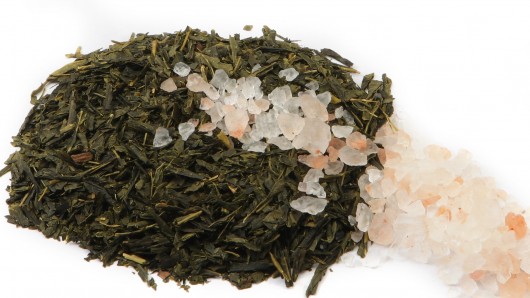
Dissolving polyphenols found in green tea in a saline solution instantly produces transparent coatings with a myriad of potential uses (Photo: Colin Dunjohn)
Researchers at Northwestern University have discovered new ways of utilizing the properties of naturally occurring polyphenols found in green tea, red wine and dark chocolate. Dissolving polyphenol powders in water with a small amount of salt instantly produces transparent coatings that kill bacteria on contact, have antioxidant qualities and are non-toxic. The sticky nature of polyphenols and the low cost of materials could open the door to a wide range of uses for these coatings.
Apparently the coatings can stick to virtually any surface, even Teflon, and are only 20 to 100 nanometers thick, potentially making them ideal for use in a whole range products.
“We discovered a way to apply coatings onto a variety of surfaces that takes advantage of the sticky properties of the polyphenol compounds,” said Phillip B. Messersmith, Professor of Biomedical Engineering, who led the research. “It’s a very simple dip-coating process, and the antibacterial and antioxidant properties are preserved in the coating. One could take a stainless-steel hip implant apply the process to it, and the coating that emerges spontaneously and with no other modifications will kill bacteria and quench reactive oxygen species, such as free radicals.”
Polyphenols are naturally occurring molecules found in many plants that also give some flowers, fruits, and vegetables their color. They are antioxidants that can reverse problems caused by oxidative stress to artery walls and their anti-inflammatory properties are said to help relieve chronic pain in conditions like rheumatoid arthritis.
Furthering their research, Professor Messersmith and his team experimented with dipping various objects into saline solutions of tannic acid or pyrogallol, with similar results but at a much lower cost and with even faster results. They went on to test “medically relevant polymers, engineering polymers, metals, inorganic substrates and ceramics,” with the same success. They were also able to modify the coatings enabling additional functions without affecting the original properties. In one experiment they succeeded in adding an anti-fouling element to the coating which would make it ideal for applying to pacemakers to prevent the buildup of cells on its surface.
“The coatings innately have properties that are very beneficial to saving lives and keeping people healthy," says Tadas S. Sileika, a graduate student in Messersmith’s lab and first author of the paper detailing the research. "Without any further modification, they can help prolong the life of a medical device, reduce inflammation in a patient and prevent bacterial infections.”
In fact, the list of potential uses of these coatings is a lengthy one with applications in consumer, medical and industrial products and facilities, water purification, not to mention the food processing industry.
The study was published in the journal Angewandte Chemie
Source: Northwestern University
Copyright © gizmag 2003 - 2013 To subscribe or visit go to: http://www.gizmag.com
http://www.gizmag.com/polyphenol-antibacterial-coating/28792